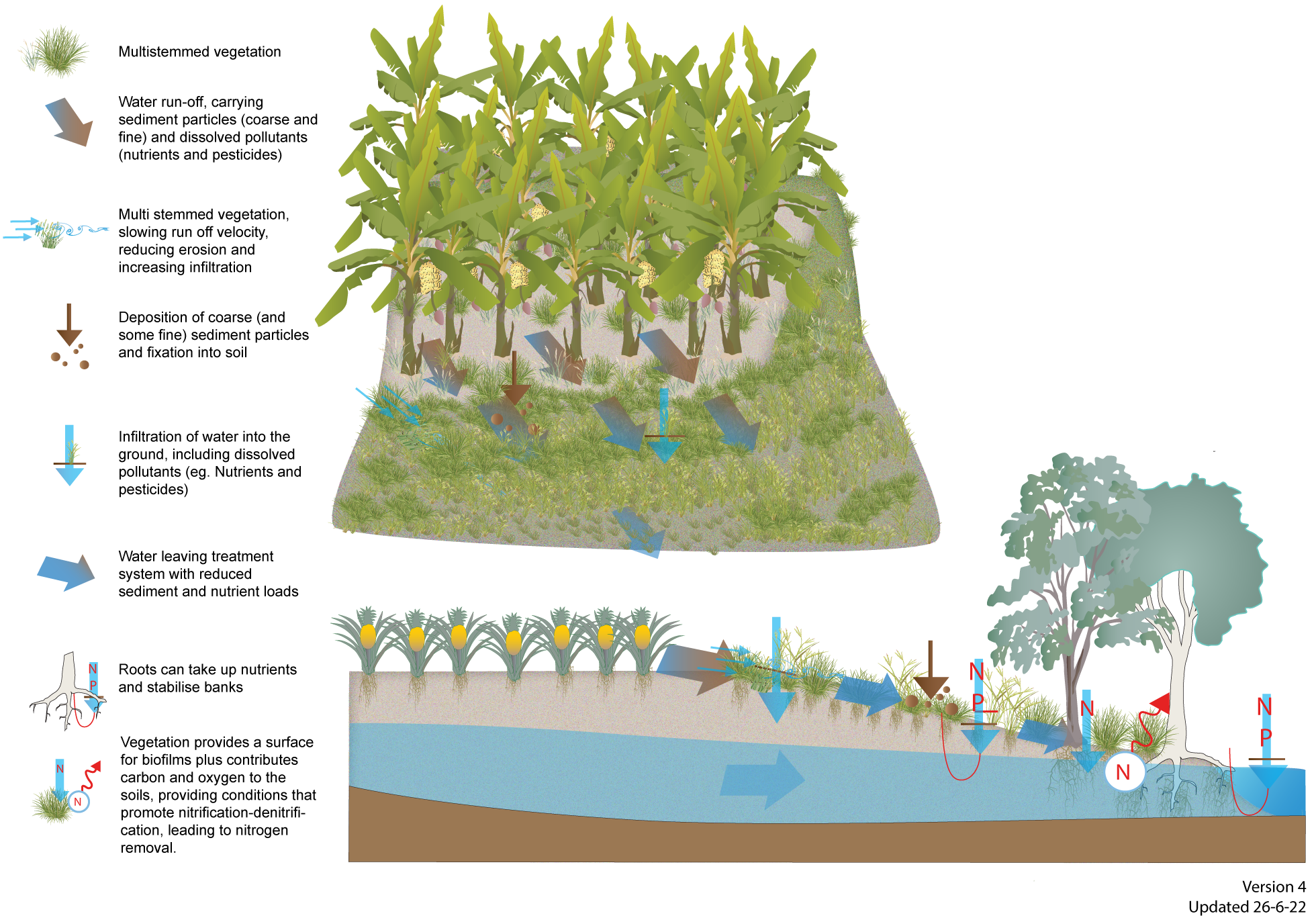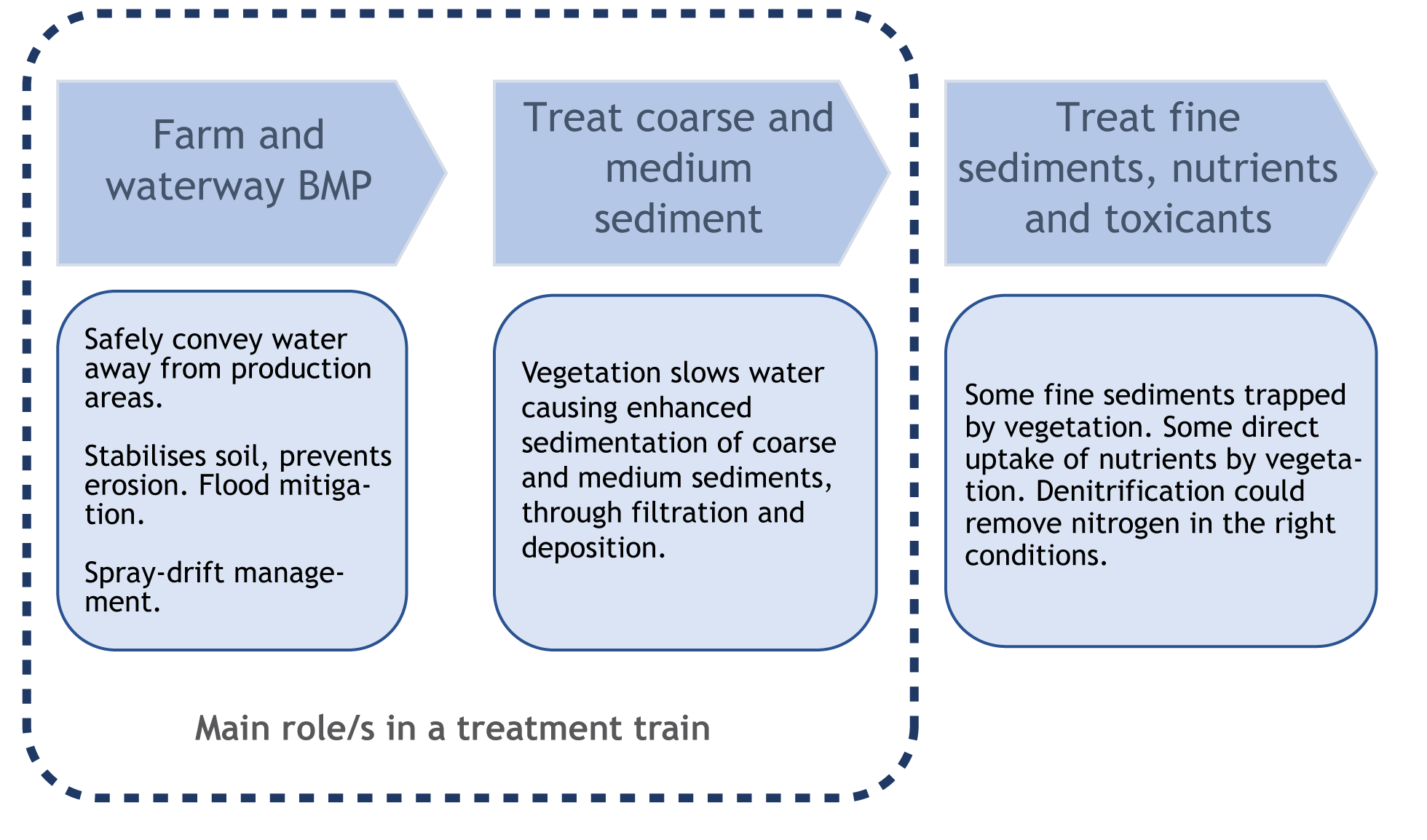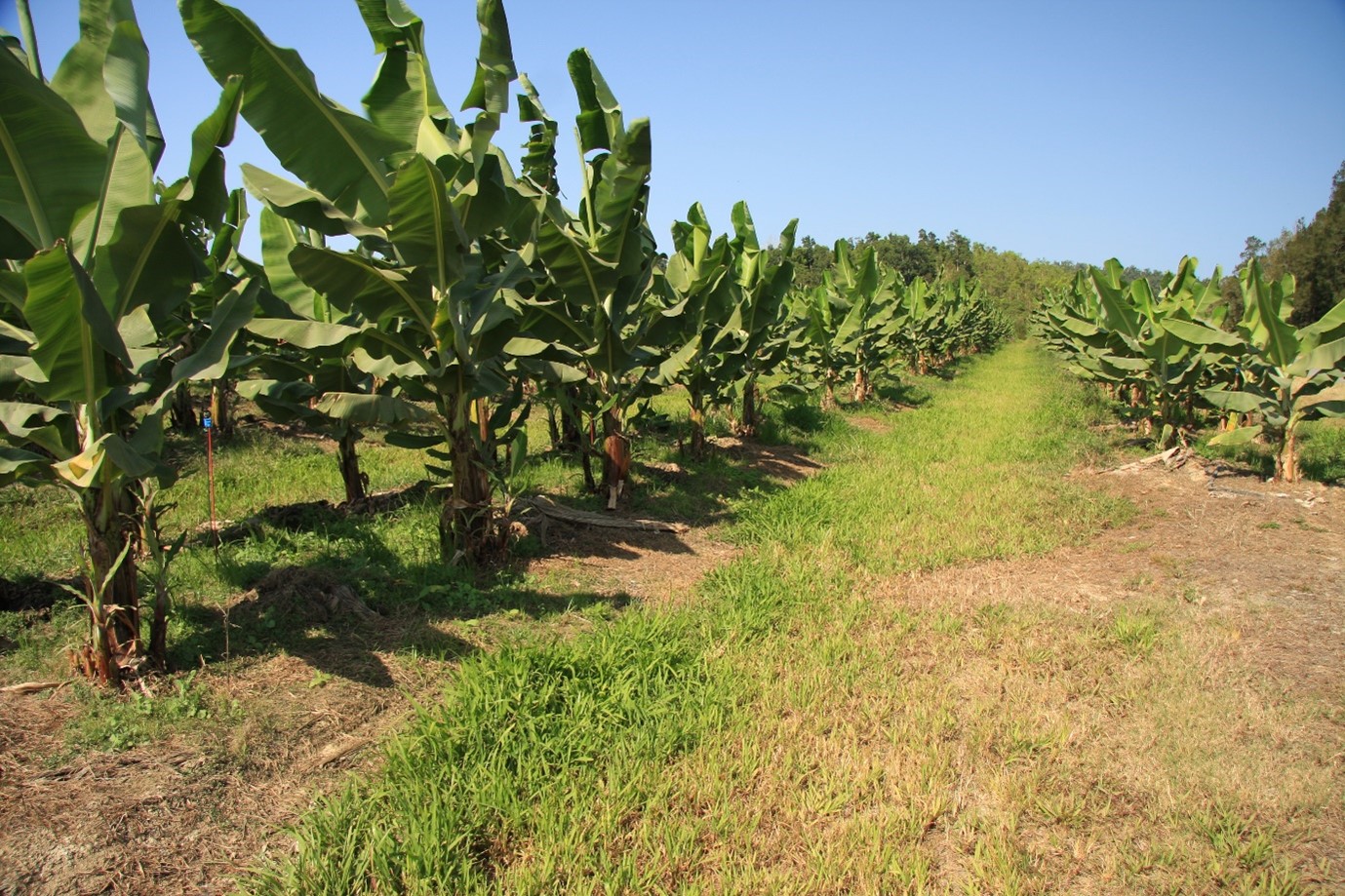|
|
Vegetated buffers and swalesVegetated buffers and swales — Key ConsiderationsSelect from the tabs below What makes an effective buffer or swale for treating run-off?
Note: Other factors will need to be considered if the function of the buffer or swale is for erosion prevention, bank stabilisation or habitat.
Treatment processes
Suitability and limitationsVegetated buffers and swales are suitable in all agricultural production systems and climates and are used throughout Queensland. Buffers may have many different purposes, other than water quality improvement including habitat, flood mitigation, spray drift management and bank stabilisation. The purpose of the buffer will depend on the values of, and threats to, the receiving environment. This will in turn influence the design and management of the buffer. Vegetated buffers and swales can be used as part of an overall farm drainage strategy to improve run-off water quality, provided best practice farm management is implemented and design considerations are addressed. The effectiveness of vegetated buffers and swales as a treatment system is limited by their capacity to achieve sufficiently slow flows for effective pollutant removal when there are large volumes of water (high rainfall, steep slopes) and a risk of channelisation, scour, exfiltration (loss of nutrients or pesticides via groundwater) and sediment build-up with subsequent resuspension[1][2]. The capacity of buffers and swales to remove pollutants from surface run-off is also reduced when the soil is saturated thereby preventing infiltration[3]. The cost-effectiveness of vegetated buffers and swales in removing the target pollutant/s needs to be considered relative to other treatment structures. Refer to cost considerations for more information.
DisclaimerIn addition to the standard disclaimer located at the bottom of the page, please note the content presented is based on published knowledge of treatment systems. Many of the treatment systems described have not been trialled in different regions or land uses in Queensland. The information will be updated as new trials are conducted and monitored. If you have any additional information on treatment systems or suggestions for additional technologies please contact us using the feedback link at the bottom of this page. References
Last updated: 5 November 2022 This page should be cited as: Department of Environment, Science and Innovation, Queensland (2022) Vegetated buffers and swales — Key Considerations, WetlandInfo website, accessed 8 May 2025. Available at: https://wetlandinfo.des.qld.gov.au/wetlands/management/treatment-systems/for-agriculture/treatment-sys-nav-page/vegetated-buffers/key-considerations.html |

 — Department of the Environment, Tourism, Science and Innovation
— Department of the Environment, Tourism, Science and Innovation






